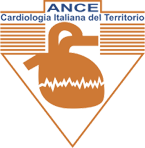Importance Heart disease (HD) and cancer are the 2 leading causes of death in the United States. During the first decade of the 21st century, HD mortality declined at a much greater rate than cancer mortality and it appeared that cancer would overtake HD as the leading cause of death.
Objectives To determine whether changes in national trends had occurred in recent years in mortality rates due to all cardiovascular disease (CVD), HD, stroke, and cancer and to evaluate the gap between mortality rates from HD and cancer.
Design, Setting, and Participants The Centers for Disease Control and Prevention Wide-Ranging Online Data for Epidemiologic Research data system was used to determine national trends in age-adjusted mortality rates due to all CVD, HD, stroke, and cancer from January 1, 2000, to December 31, 2011, and January 1, 2011, to December 31, 2014, overall, by sex, and by race/ethnicity. The present study was conducted from December 30, 2105, to January 18, 2016.
Main Outcomes and Measures Comparison of annual rates of change and trend in gap between HD and cancer mortality rates.
Results The rate of the decline in all CVD, HD, and stroke mortality decelerated substantially after 2011, and the rate of decline for cancer mortality remained relatively stable. Reported as percentage (95% CI), the annual rates of decline for 2000-2011 were 3.79% (3.61% to 3.97%), 3.69% (3.51% to 3.87%), 4.53% (4.34% to 4.72%), and 1.49% (1.37% to 1.60%) for all CVD, HD, stroke, and cancer mortality, respectively; the rates for 2011-2014 were 0.65% (−0.18% to 1.47%), 0.76% (−0.06% to 1.58%), 0.37% (−0.53% to 1.27%), and 1.55% (1.07% to 2.04%), respectively. Deceleration of the decline in all CVD mortality rates occurred in males, females, and all race/ethnicity groups. For example, the annual rates of decline for total CVD mortality for 2000-2011 were 3.69% (3.48% to 3.89%) for males and 3.98% (3.81% to 4.14%) for females; for 2011-2014, the rates were 0.23% (−0.71% to 1.16%) and 1.17% (0.41% to 1.93%), respectively. The gap between HD and cancer mortality persisted.
Conclusions and Relevance Deceleration in the decline of all CVD, HD, and stroke mortality rates has occurred since 2011. If this trend continues, strategic goals for lowering the burden of CVD set by the American Heart Association and the Million Hearts Initiative may not be reached.
JAMA Cardiol. Published online June 29, 2016. doi:10.1001/jamacardio.2016.1326
A cura di Calogero Calcullo
